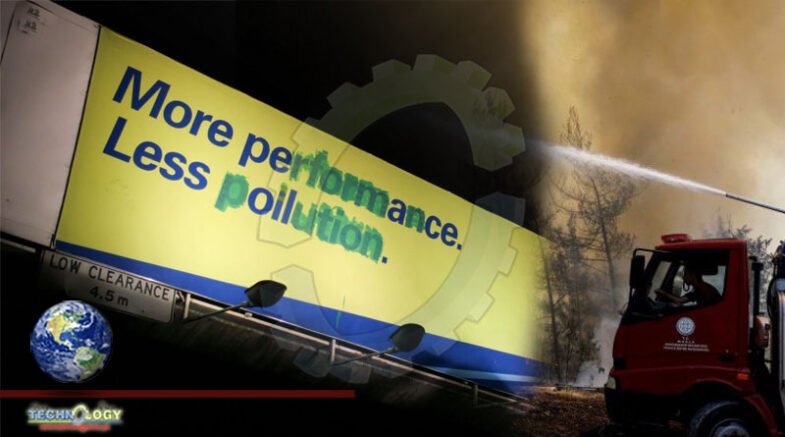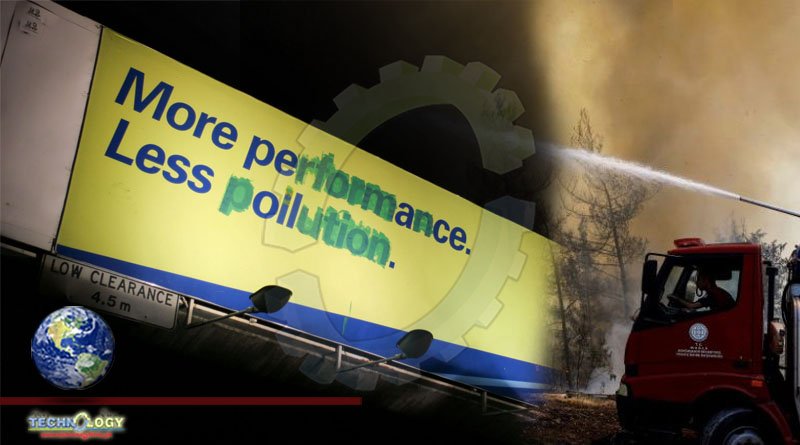We all live in two worlds: a physical one and a social one. The new report of the Intergovernmental Panel on Climate Change, especially Impact Of Smog which was released on Monday, is ostensibly about the physical world. It states—even more clearly and forcefully than it has stated in all its reports back to 1995—that humans are wrecking that physical world. Setting it on fire.

But precisely because none of that is news, especially after the climate events of this northern-hemisphere summer, the most interesting question about the report is its effect on the social world. It’s clearly designed to goose us into action, preferably over the eighty days remaining until the world convenes at the Glasgow climate conference, and so it has been met with coördinated calls for urgent action from the obvious players: the Secretary-General of the United Nations (“code red for humanity”), America’s climate envoy, John Kerry (“overwhelming urgency”), and British Prime Minister Boris Johnson, who will be a host at the Scottish conclave (“wake-up call”). But those reactions are not the only voices. Earlier this month, the think tank InfluenceMap released a report on a hard-to-track shadow side of our social world: twenty-five fossil-fuel companies (led by Exxon) put out a series of ads on Facebook that were viewed four hundred and thirty-one million times in 2020 alone.
The report states, “The ads promoted either the climate-friendliness of the industry, including voluntary targets, investments into renewables, and promoting fossil gas as green, or promoted an ongoing role for oil and gas in the energy mix. Many of these ads either contained misleading content or present information that was misaligned with the science of climate change according to both the Intergovernmental Panel on Climate Change’s and the International Energy Agency’s reports on reaching net zero by 2050.” These are ads that explain how drilling for more gas is somehow key to stabilizing the planet’s temperature, or that a company’s tiny research into some niche renewable-energy source somehow offsets its core business. They are increasingly subtle and effective, and every bit as dangerous as the more blatant climate denial from which they descend.
The tactics of the fossil-fuel industry developed at the same time as the I.P.C.C.—in the early nineteen-nineties, in the wake of the furor that erupted after nasa’s James Hansen offered the first crucial public warnings about global warming. The motivation has remained the same: to slow action on climate change in order to preserve the business model as long as possible. It’s been highly effective: in a political world where blocking change is easier than initiating it, vested interest has a remarkable advantage.
In time, historians will conclude that the concerted effort to slow our reaction to the threat of climate change underlay much of the damage that the social world has suffered in past decades: from the pre-Murdoch News Corp (then News Limited), which was aligned, from the start, with Australia’s coal industry, to the billionaire influence network that sprang in large part from the Koch brothers’ opposition to carbon regulation, our social world has been as thoroughly polluted as our physical one, and a great deal of the divisiveness that now clouds every issue can be traced to this battle for the energy future. In that light, the climate movement has essentially been fighting for one thing: to build a conscious consensus among people that the world is in danger, and, in the process, to weaken the hand of the carbon industry. It’s a fight for mental clarity, amid the vaguely toxic mental fog that has shrouded this life-and-death question for decades.
The I.P.C.C. has gotten better at its job over the years, and so have movements: the message that we face implacable deadlines is clearly getting through, and public opinion is shifting. But, again, delay is victory for the oil industry. Eventually, sun and wind power, being cheap, will topple fossil fuels—but every year the industry can hold that shift off is a win for it. And every hundred billion dollars that the government spends on cat’s-paw schemes, such as carbon sequestration and natural-gas based hydrogen, is a hundred billion dollars not spent on doing the essential work of energy transition.
The I.P.C.C. has documented—with terrifying precision, employing all the tools that human cleverness can conjure up—the predicament of our physical world. But, at this point, that’s not where the fight really lies.
Passing the Mic
This summer has seen the most important series of climate-adjacent proposals that Congress has ever considered Impact Of Smog: first, the bipartisan infrastructure bill, which passed in the Senate, on Tuesday, with nineteen Republican votes (and which, thanks to the Republicans, delivers on as many wish-list items for Big Oil as for environmentalists), and then the Democrats-only reconciliation budget resolution, currently set at $3.5 trillion, which passed in the Senate on Wednesday morning, but is awaiting approval from moderates. It’s a complicated legislative tangle, so I asked Leah Stokes to elucidate. Stokes is a political scientist at the University of California, Santa Barbara, and the author of “Short Circuiting Policy,” a classic account of lobbying over energy bills. (You can also listen to her incisive podcast with Katharine Wilkinson, “A Matter of Degrees.”) She’s currently working with the nonprofit Evergreen Action to help pass climate legislation. (Our conversation has been edited.)
There’s a bipartisan infrastructure bill working its way through Congress. What’s in it that’s good, and what’s missing in the Impact Of Smog?
The bill is not a climate bill. It has some important investments in clean water, public transit, and our energy grid, but it lacks policies that target carbon pollution across the economy. The scale of spending is also inadequate for many critical climate issues. While President Biden proposed around fifty billion dollars in spending to build five hundred thousand electric-vehicle charging stations across the country, this bill has around five billion dollars for this effort.
Similarly, when it comes to electrifying school buses—a policy that would protect children’s health—the bipartisan bill falls short. Biden proposed spending twenty billion dollars, an investment that would have electrified around twenty per cent of the school-bus fleet to Impact Of Smog. Yet, the final deal only includes $2.5 billion in funding, which will only replace around eight thousand school buses, or less than three per cent of the national fleet.
Source New Yorker
